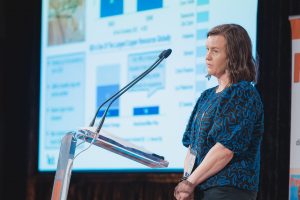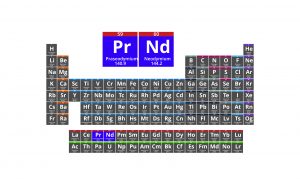Ensuring Teck Australia remained committed to an environmentally sustainable future was a core focus for the company, according to Exploration Manager – Australia Andrea Reed.
Speaking in the second session of Paydirt’s Australian Nickel Conference, Ms Reed outlined Teck Australia’s sustainable pathway in the energy transition. She said the company had set itself the target of reaching Net Zero by 2050 for greenhouse gas emissions they indirectly create.
“We’ll achieve this through a variety of methods. These include potentially sourcing 100% renewable energy, exploring the use of carbon capture and storage, and sourcing 50% of operational energy at QB2 [Quebrada Blanca Phase 2] from renewable resources,” Ms Reed said.
Explaining the World Economic Forum rates biodiversity loss and ecosystem collapse as one of the largest threats over the coming decades – Ms Reed expressed Teck’s commitment to playing its role in reversing this threat.
“We will be a nature positive mining company by 2030, through conservation, protection and restoration of country as we aim to either conserve or rehabilitate, based on our 2020 baselines, at least three hectares for every one hectare that we disturb as a result of our mining activities.”
Teck announced in 2022 they will protect 14,000 hectares of wildlife habitat and ecosystem – the equivalent to more than 40% of its current mining footprint.
While most resources companies have either the option to grow through exploration or ongoing mining production, Teck is an outlier with both existing and established production and major near-term growth opportunities.
Currently, Teck’s copper portfolio is anchored in two long-life, world-class assets.
The first, the Antamina project located in the Andes Mountain Range of Peru. Teck holds a 22.5% interest in the asset which is a high-quality copper and zinc operation.
The second asset, Highland Valley Copper (HVC), is Canada’s largest base metal mine.
However, in addition Teck have several near-term copper focused projects located in well established mining jurisdictions in the Americas.
“These are forecasted to be low-cost operations, and many have already had their risks mitigated through strategic partnerships already in place.”
“This portfolio gives Teck a flexibility that allows for effective management of often uncertain timing of permitting and keeps us in a strong financial position.”
Ms Reed said Teck’s Australian team was currently growing, as it upgraded its portfolio with nickel, copper and zinc projects. The team were considering a range of options and joint venture agreements as well as strategic alliances.
“We know the competition in Australia is fierce, but our small team and our dedication to discovery, we think, is an advantage.”

Teck Australia Exploration Manager – Australia, Andrea Reed



